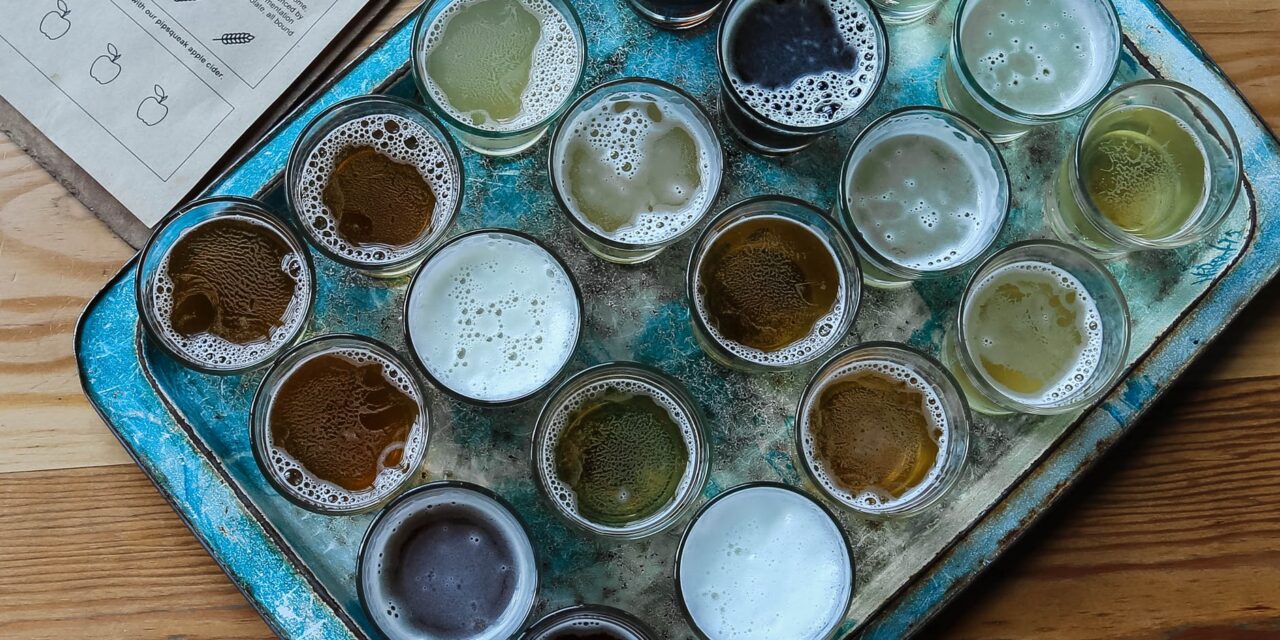Beer, as you may have noticed, is not solely the pale yellow fizzy stuff that your old man used to drink while he cursed at you for beating him in Uno. Beer comes in all kinds of colors – pale yellow to pitch black and lots of colors in between. Why is that? And what does that mean for beer flavor?
As with many discussions regarding beer, it all goes back to the ingredients used to make the beer. For this convo, we’re specifically talking about the grain bill, because THAT, children, is what gives beer its color and a lot of its flavor (though not all of its flavor).
The grain bill refers to the grain used in the mash, or the cereal from which brewers extract sugars in various forms (there are lots!). For the most part, we’re talking malted barley (the definition of malted is for another article, I think), though some “adjuncts” can be and often are used (think wheat, corn, and rice). That sugary liquid that is created from steeping the grain in warm water is the “wort” (pronounced “wert”) that yeast then magically transforms into beer. Depending on how that particular grain is treated prior to mashing, your wort, and therefore your beer, will have a different color. That’s the simple version. But you’re not simple folk! Let’s get more complicated. Grab you a beer first, though…
Cool. So despite all of what I just said, it’s not as simple as really dark grain makes really dark beer. Well, it is, but it isn’t. You see, the VAST majority of beers have about 85% of the same ingredient – Base Malt. Now, that base malt varies from producer to producer and brewer to brewer, but for the most part we’re talking a malted barley that isn’t toasted just a wee bit. That’s right, even your darkest stout is made from a lightly toasted base malt, just like your favorite IPA. Crazy, huh? Where there’s a deviation is in what we call specialty grains. This is where a ton of color AND flavor is derived. These specialty grains are treated somewhat differently in the malting process (some are caramelized, some are toasted a bit, some are roasted a bit, some are roasted more, some are roasted a lot). There are MANY types of specialty grains, and they have tons of appetizing and interesting names: Caramel Malt, Crystal Malt, Special B, Chocolate Malt, Munich Malt, Vienna Malt, British Amber, Belgian Amber, Biscuit Malt, Black Patent… the list goes on and on.
It’s these little rock stars that impart a lot of your flavors, aromas, and colors in your finished beer product. The crystal/caramel malt varieties add a little amber to a beer but are really there to provide non-fermentable dextrins which help to add sweetness, flavor, and body to a beer. Chocolate malt does exactly what you think – it darkens the beer significantly and gives a chocolatey aroma/flavor. Munich and Vienna are somewhat similar and act like base malt, but also provide more color and non-fermentables for richer beers (those Dunkels, Vienna Lagers, and Oktoberfests feature these guys). Black Patent Malt (so called because it was originally made in a new and special process that was patented because it was so dope) imparts an intense darkness to your favorite roasty stouts. Parenthetically, its invention was a HUGE deal in stout brewing because prior to that, people were just using loads and loads of darkly roasted malt that cost way more and could lead to an overwhelming roastiness and astringency in an effort to get the desired blackness. Using these grains in generally less than 15% of the grain bill of your beer, brewers can create beers that are nearly clear, perfectly golden, ruby red, nutty brown, or black as night. Try to make a grape do that.
Suck it, wine.
Chapelboro.com does not charge subscription fees. You can support local journalism and our mission to serve the community. Contribute today – every single dollar matters.



